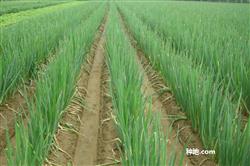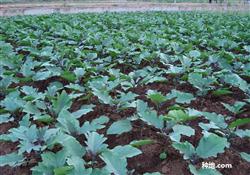What is the reason for eggplant falling flowers and fruits?

What is the reason for eggplant flower drop fruit? How to prevent? In eggplant production, flower and fruit drop is usually serious, which restricts the increase of yield and is not conducive to the improvement of production efficiency. The main reasons for eggplant flower drop are: 1. temperature discomfort eggplant fruit stage requires higher temperature, the appropriate temperature for the fruit stage is between 25 - 30℃, the night temperature should be between 15 - 20℃, the temperature is lower than 15℃ or higher than 35℃, the growth is slow, the flower drop is serious, and the performance in production is early and less in summer. 2. The development state of the flower is poor. If the eggplant flower develops well, the flower shape is large, the color is thick, the style is longer or equal to the anther when flowering, which is beneficial to pollination and fertilization, and the fruit is well set, while the development is not good, the style is shorter than the anther, it is difficult to get pollination, and most of them fall off. 3. Nutrient deficiency, lack of fertilizer and water, plant growth is weak, nutrients used to maintain growth, reproductive capacity is low, less fruit. 4. Topdressing is not timely, time is not appropriate, is not conducive to fruiting generally manifested as early topdressing, plant excessive growth, resulting in flower shedding. If topdressing is not timely, the plant premature senescence production capacity will decrease, and it will also be unfavorable for fruit setting. 5. If the fertilizer proportion is improper, the plant will grow excessively or grow weakly, and the proportion of vegetative growth and reproductive growth of the plant will be unbalanced, and it will be difficult to set fruit. 6. The photosynthetic capacity is low, the quality of flowers is poor, and it is easy to fall off; eggplant is a light-loving crop, and the requirements for light time are strict. When the light is weak, the growth and development of plants are slowed down, and the flower bud quality is poor. 7. Disease and pest damage leads to the reduction of photosynthetic capacity of plants, unfavorable accumulation of photosynthetic products, and unfavorable flower and fruit setting. The main diseases and insect pests that harm eggplant are verticillium wilt, aphid, red spider, etc. Verticillium wilt usually does not occur at seedling stage, but usually occurs from bottom to top or from one side to the whole plant at fruit setting stage. Leaves turn yellow at leaf edge and vein, and then develop to half leaves or whole leaves, resulting in reduced photosynthetic fertility, reduced nutrient accumulation and reduced fruit setting rate. Aphids often swarm and harm, sucking host juice with needle-like tube haustoria, resulting in yellow leaves, atrophy, deformation and withering. Both adult and nymph mites can feed on plant sap, which makes leaves discolored or dried, resulting in reduced photosynthetic capacity of leaves and unfavorable fruit setting. According to the above reasons, corresponding countermeasures should be taken in eggplant production in order to promote the increase of fruit setting rate and improve production and management benefits. The main measures are as follows: 1. Pay attention to promoting the growth of styloid flowers, reduce the proportion of short styloid flowers, so as to improve the fruit setting rate; the key measures applied in production are to strengthen the temperature management during the flowering and fruiting period, within the temperature range of the fruiting period, the temperature is slightly lower, the daytime is controlled at about 25℃, and the night is controlled at 15 - 20℃, so that the flower bud differentiation is slightly delayed, which is beneficial to the formation of long styloid flowers, and the proportion of short styloid flowers can be effectively controlled. In addition, reasonable arrangements should be made for planting crops in production, so that the temperature during the fruiting period is above 25 ° C during the day and between 15 and 20 ° C at night. In the summer high temperature period, attention should be paid to watering and cooling. In case of continuous high temperature weather, shade nets can be used to lower the temperature and promote the fruit setting rate. 2. Strengthen fertilizer and water management, maintain moderate plant growth, balance the relationship between vegetative growth and reproductive growth, and improve fruit setting rate: Especially, the first topdressing should be timely, preferably when the first fruit is 3 cm in diameter, topdressing should be applied at the appropriate time to prevent premature fertilization, resulting in flower and fruit shedding. After each fruit harvest, topdressing should be applied once to supplement nutrients to prevent premature senescence of plants, resulting in reduced productivity. In addition, attention should be paid to the appropriate proportion of fertilization to prevent imbalance between vegetative growth and reproductive growth of plants caused by partial fertilizer application. In particular, attention should be paid to preventing partial application of nitrogen fertilizer, resulting in excessive growth of plants. The proper ratio of N, P and K in eggplant production is 2∶1∶1.7. The plant growth should be observed and the method of promoting weak and controlling strong should be adopted to balance the plant growth. 3. Strengthen the adjustment of plant shape to ensure that the plant has good permeability to facilitate fruit setting: Production should pay attention to the timely removal of old branches and leaves, because eggplant generally in the branch of flowers and fruits, so in the production should pay attention to promote the growth of branches, generally one, two, three branches of the results are mostly effective flowers, can be very good development and fruit, and after four branches, flower bud differentiation is poor, fruit setting rate is low, mostly invalid flowers, so in the production should pay attention to the removal of branches after four branches, in order to control the field branch quantity, concentrated nutrition supply, in order to facilitate fruit setting. 4. Strengthen the prevention and control of diseases and insect pests: strengthen the prevention and control of verticillium wilt, red spider and aphid in production. Soak seeds with 50% carbendazim wettable powder with 0.2% seed weight for 1 hour or soak seeds with warm water at 55℃ for 15 minutes before sowing, cool them in cold water and germinate; sow carbendazim per mu of planting field for soil disinfection, irrigate roots with 50% mixed sulfur suspension agent and 50% carbendazim wettable powder at the initial stage of verticillium wilt occurrence, and irrigate 500ml for each plant. After the occurrence of red spider, spraying 1.8% agromite EC 2000 times solution or 2.5% Uranus 3000 times solution for control. At the early stage of aphid occurrence, spray 50% aphimidarb WP 2000 - 3000 times or 21% Mishashi 3000 - 4000 times or 10% imidacloprid 3000 times. For the plants damaged by diseases and insect pests, foliar fertilizer, plant treasure, 0.5% urea +0.5% potassium dihydrogen phosphate should be sprayed in time to supplement nutrients, improve photosynthetic capacity of leaves, increase photosynthetic product accumulation, and improve fruit setting rate. 5. Spray chemicals to protect flowers and fruits, 1 - 2 days before flowering, with 30 - 40 ml/kg of 2.4-D coated in the calyx or fruit stalk; spray 120 ml/kg or 180 ml/kg, 200 ml/kg of sodium bisulfite after the first layer of fruit set, can effectively increase the accumulation of substances, improve the fruit set rate. Click for more eggplant growing techniques Click for more vegetable growing techniques
- Prev

What are the diseases and insect pests of green onions?
What are the diseases and insect pests of green onions? In order to control the diseases and insect pests of green onions, we should focus on the prevention and control of diseases and insect pests, carry out 2-3 years of rotation with crops other than onions, clean the countryside, eliminate the sources of diseases and insect pests, select disease-resistant varieties, and disinfect seeds, that is, soaking seeds in 50 ℃ warm water for 25 minutes before sowing, stirring and then soaking.
- Next

How to fertilize eggplant in summer?
How to fertilize eggplant in summer? Please introduce to the guide that summer eggplant can be topdressing like this (for reference): ditch fertilization. It has become a habit for vegetable farmers to apply chemical fertilizer with water, but this method should not be used in summer high temperature season. Because of the high temperature, the effect will be reduced after a large amount of ammonia volatilization in the application of chemical fertilizer. ...
Related
- Where is it suitable to grow horseradish in China? it is expected to see the middle altitude horseradish in Alishan.
- How to prevent tomato virus disease reasonably? (Control methods included)
- Many people like to plant towel gourd on the balcony. What are the main points of this method and management?
- What crops can chili peppers be mixed with?
- Fertilization techniques and matters needing attention in Tomato
- What are the grafting techniques for peach seedlings in spring?
- Harm and control methods of root swelling disease of Chinese cabbage
- What are the pests of sweet potatoes? How to prevent and cure it?
- Symptoms, causes and Control methods of navel Rot in Tomato
- The cause of "Cucumber rotten bibcock" in Farmers' planting Cucumber and its Control Plan

